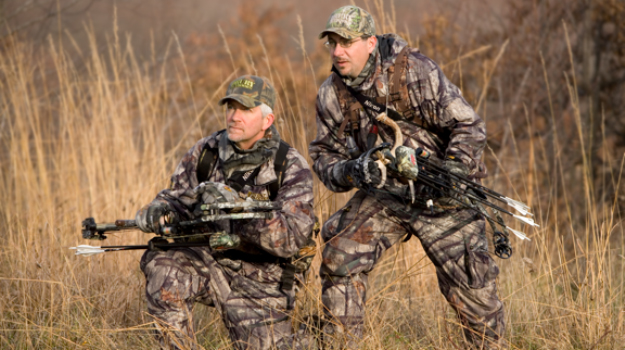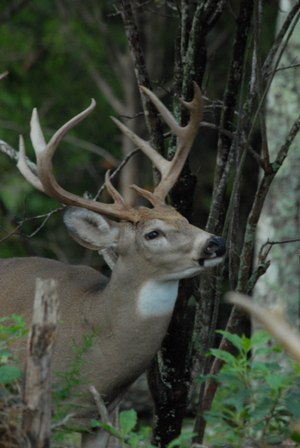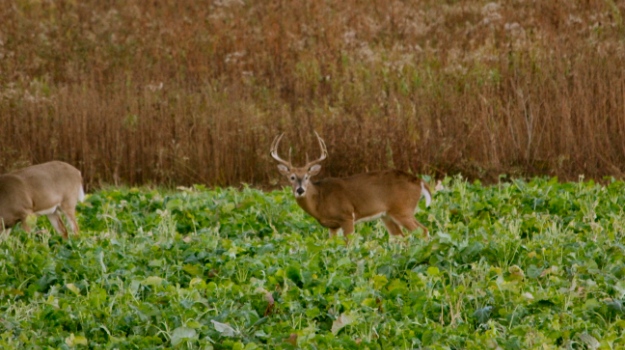October 13 – October 25

Editor’s Note: Mark and Terry Drury have been a part of the Mossy Oak family as long as there has been M.A.D. Calls and Drury Outdoors that produces videos and TV shows. But the history of the Drury brothers and Mossy Oak goes back even farther than the history of Drury Outdoors. Mark Drury was a salesman for Mossy Oak in Missouri, Iowa and Kansas while in college, but Mark did more than sell Mossy Oak camouflage. He was one of the early members of the Mossy Oak family. When Mark and his brother Terry founded Drury Outdoors, Mossy Oak was right there for them and with them. According to Terry Drury, “Some of our best friends in the early days were Toxey Haas, the creator of Mossy Oak, and his dad, Fox Haas, Ronnie “Cuz” Strickland, Bill Suggs and the late Bob Dixon. Our company and our family plans to continue with Mossy Oak, until we go out of business, or we pass away.” Drury Outdoors produce “Bow Madness,” “Dream Season,” and “Thirteen,” all TV shows airing on the Outdoor Channel. The company also produces “Natural Born,” which airs on the Pursuit Channel. Also “King of the Spring” may return in the spring of 2015 on the Outdoor Channel. “Our show, ‘Thirteen’ is the way Mark and I have divided-up deer season from what we've observed, documented and used to predict the movement patterns of older-age-class bucks throughout the 13 weeks of deer season,” Terry Drury explains. “In the 13 weeks that the show airs, we’ll be sharing all the information we have and use each season to consistently take trophy bucks all across the United States. We also allow the viewers to see the mistakes and blunders that we make as well as our successes.”
During the October Lull of deer season, about 95 percent of the deer’s movements occur at night. We start seeing a lot of scrapes at this time, and we know the scrapes are being made at night. The deer no longer come to green fields during daylight but do stay in their bedding areas. During the Lull, they have micro home ranges, and they’re in hard horn. They're a little indecisive about where they want to spend most of their time.
By this time, the pecking order of the bucks is usually established. An individual deer’s personality isn’t much different than the hunter’s personality. Some older-age bucks are very aggressive. They have to overemphasize their dominance. They’ll fight with any buck that acts like he wants to challenge the dominant buck. Really and truly, at this time of the year, I guess you could say some of these mature bucks are just looking for a fight.
During this Phase 3, many other big, mature, dominant bucks want to avoid fights at all costs. We've seen big, mature, heavy-racked whitetails that will try to avoid a fight at all costs. These bucks aren’t super-aggressive. They’ll often move to an area where they don’t think they’ll encounter any other bucks. They don’t want to fight five or six times per day. I guess the best way to describe the nature of these mature bucks is some are lovers, and some are fighters.
When these big bucks come out of the velvet and go into hard horn, they’ll move into really-small micro areas. For instance, a buck may choose to stay in a pile of brush out in the middle of a clear cut. At this time, if a buck can find a place to avoid other bucks and have all the food he wants to eat, all the water he wants to drink and plenty of bedding cover, then he’ll stay in those little bitty spots during daylight hours.
 The real secret at this time of the year, once you have a buck holding in a micro area like this, is to be real careful going to and from your tree stand and not spook the deer out of the micro area. Bucks may have scrapes that they’re bedding close to, and they may be just laying downwind of their scrapes. So, when a buck or does come into a scrape site, they can identify that individual deer. They’ll know whether they want to get up and fight, or get up and mate, or not get up at all.
The real secret at this time of the year, once you have a buck holding in a micro area like this, is to be real careful going to and from your tree stand and not spook the deer out of the micro area. Bucks may have scrapes that they’re bedding close to, and they may be just laying downwind of their scrapes. So, when a buck or does come into a scrape site, they can identify that individual deer. They’ll know whether they want to get up and fight, or get up and mate, or not get up at all.
This period is also when you don’t want to hunt your best places for the biggest bucks you’ve identified. At certain times during the year and under certain wind and weather conditions when you’ve located bucks, you can go to those areas and have a really good chance to take that big deer. But at other times of the year when you go to those regions, your chances of taking those bucks are greatly reduced. During the Lull is one of the worst times to try and get close to a buck and take him. Also, we have to remember that every time you go into a place, no matter how clean you are, you'll leave some type of odor. The more times you get close to that buck and leave human odor, then the more you're reducing the odds for taking that buck.
Mark and I are defensive hunters. By that I mean we spend as much time, energy and studying when not to hunt an older-age-class buck, as we do determining the best time to hunt that older-age-class buck. Last season during the October Lull, Mark left his farm and went to Texas - just to keep from being tempted to hunt some of the older-age-class bucks he knows are on his farm.
You have to remember. If you're going down the road, and a skunk is crossing the road or has been hit in the road, you know how awful that smell is. When a deer smells human odor, it probably smells just as bad as that skunk. We do everything that we possibly can to stay scent-free. But even then, we still know we’re leaving some human odor every time we go into the woods. Never forget that your body and clothing carry human odor, as well as every piece of equipment - your camera, bow, arrows, broadheads, tree pods, daypacks, compasses, GPS, flashlights. As scent-free as we try to be, we know that a deer’s nose and ability to detect odor is as keen or keener than a bloodhound. We don’t want to damage the places we intend to take a daylight walking older-age-class buck, until we have all the conditions in our favor. During the October Lull, very rarely will we have all the conditions in our favor to take an older-age-class buck.
I'm often asked, “Terry, what are you and Mark doing to eliminate human odor?” We spray all our equipment with scent-free spray, and we leave it all outside at night. We wash all our clothing in scent-free clothes wash, as well as our towels and also shower with scent-free soap. If you really want to be scent-free, wash your pillow cases and sheets too in scent-free soap. I know you can’t totally eliminate all human odors, but we do everything to eliminate as much human odor as we can. One of the advantages of being scent-free is the deer still may know that you’ve been in his area. But if you’re as scent-free as possible, the buck may not know how long it’s been since you were in his area.
Terry Drury Explains Phase 2 – Greener Pastures Deer Hunting - September 25 – October 12
Terry Drury Explains the Pre-Lockdown Phase (Phase 4) of Deer Season – October 25 – November 1



























